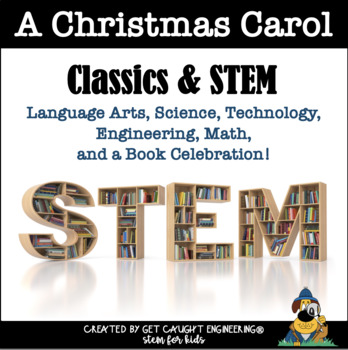A Christmas Carol | Reading and STEM Activities
- PDF
Description
A Christmas Carol - Reading and STEM Activities
A Christmas Carol by Charles Dickens is a classic book for the Holiday season. It provides, in addition to an introduction to famous plot and characters, a wonderful rich foundation for a STEM integration experience.
Each book chosen for this series includes:
· An introduction to the author
· A short synopsis of the time period in which the book was written
· A list of the main characters
· Make a bookmark activity
· A letter to send home to the parents explaining the Classics and STEM program
· A template for laying out the date each chapter needs to be read by.
·
Additionally, this packet for A Christmas Carol contains:
· Reading comprehension questions
· Research: Victorian Era inventions
· Science: exploring dry ice
· Engineering: creating a telegraph prototype
· Technology: creating a robot maze for the events in A Christmas Carol
·
Finally, a detailed classroom celebration for A Christmas Carol is also included:
· Menus and recipes
· Five book related hands-on activity centers
· Quiz game with 36 questions about the book
*We have included ideas for conducting this program virtually as well.
This program was designed to not only integrate all of the facets of STEM – science, technology, engineering and math, but act as an outreach program to your students’ families as they participate in reading the book and in a Family Celebration. While many families have a tradition of reading to their young children, we’ve found that this tends to fall away as the children grow older and can read on their own.
Classics & STEM brings back the joy of shared reading and the closeness it provides.
Each of the books chosen for this program has shown that they have endured the test of time and are continually ones that students reach for and read over and over. Although the books are sometimes above the students’ reading level this is overcome by having an adult read the book to them.
It also is a great unit for a classroom celebration of the book if completed entirely at school or read aloud to the students by a parent The original book is a classic but there are abridged and picture book versions that also provide the inspiring plot for children and work equally well with this unit.
Other Classics and STEM packets:
Charlie and the Chocolate Factory
Just the party portion of this packet is available at :
In addition we added two recipes and a candy house engineering challenge to this packet .
Just the engineering challenge is available at :
A Christmas Carol Engineering Challenge
The books for the Classics & STEM series will continue to be added. Follow our store and subscribe to our newsletter to be notified of additions to the program. If you have ideas for great classics to be added, please drop us a note at getcaughtengineering @gmail.com. We would love to hear from you!
How to get TPT credit to use on future purchases:
Please go to your My Purchases page (you may need to login). Beside each purchase you'll see a Provide Feedback button. Simply click it and you will be taken to a page where you can give a quick rating and leave a short comment for the product. We value your feedback greatly as it helps us determine which products are most valuable for your classroom so we can create more for you. ☺
Be the first to know about our new discounts, freebies and product launches: Look for the green star near the top of any page within our store and click it to become a follower. You will then receive customized email updates about this store.





